
Tsukihime -A piece of blue glass moon- Review
Two years ago, I wondered if Tsukihime -A piece of blue glass moon- had any chance of receiving an official western release after the sudden, unexpected announcement of Witch on the Holy Night coming overseas. I still recall how shocked I was upon hearing the news. Fast-forward several years later and now, Tsukihime -A piece of blue glass moon- is coming to North America this week and Europe later down the line. Developer Type-Moon is further capitalizing on its strong international presence in recent years, thanks to Fate/Grand Order, by finally bringing the legendary Fate/stay night visual novel westward for the first time later this year, too.
No matter how people may personally feel about the quality of their individual works, it’s undeniable how influential Type-Moon has become to creatives around the world. Jujutsu Kaisen author Gege Akutami, for instance, has previously mentioned how he was influenced by Type-Moon when working on the immensely popular series.
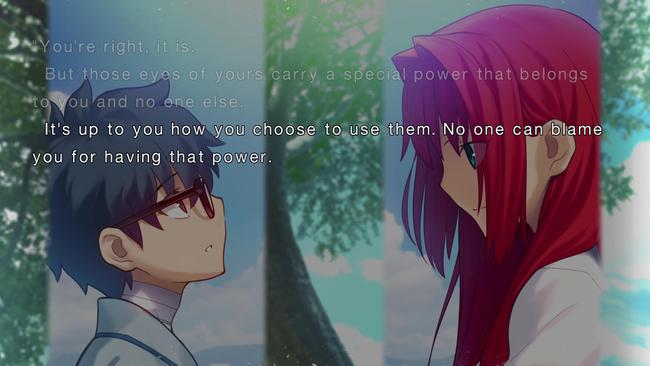
Tsukihime -A piece of blue glass moon- is a landmark release in multiple ways. Initially announced in 2008, it is the long-awaited remake of Type-Moon’s first visual novel that was released for Japan at the end of the year 2000. The remake’s launch in Japan three years ago was the first time Type-Moon released a new visual novel ever since Fate/Grand Order began service over there in 2015; author Kinoko Nasu even admitted that F/GO was the primary reason that Tsukihime’s remake took so long to come out. Before F/GO, Type-Moon’s most recent visual novels in Japan were Witch on the Holy Night’s original release in 2012 and a PlayStation Vita port of Fate/hollow ataraxia in 2014.
Of course, the release of Tsukihime -A piece of blue glass moon- in English is monumental in its own right as well. It was otherwise unthinkable until Witch on the Holy Night’s recent remaster which arrived in the west before the end of 2022.
I’ve put over 40 hours into Tsukihime -A piece of blue glass moon- and achieved 100% completion - all three main endings, all bad endings, all scenes, all gallery items, and such. While it is a fantastic retelling of Tsukihime that oozes gorgeous production values from top to bottom, Tsukihime -A piece of blue glass moon- does only contain a fraction of the original game’s routes - albeit in a more expanded, in-depth fashion.
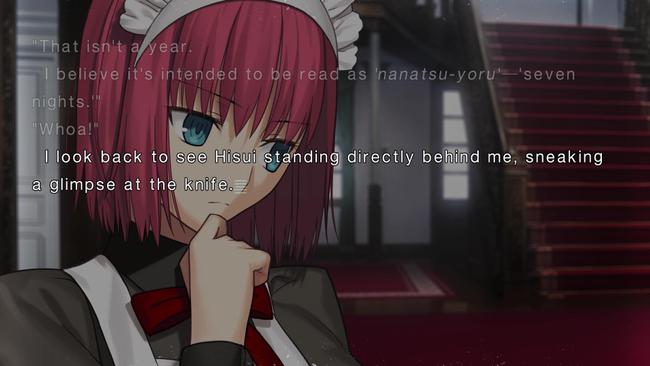
The original release of Tsukihime contained routes for five characters - Arcueid, Ciel, Akiha, Hisui, and Kohaku; Arcueid and Ciel’s routes form the ‘Near Side’ because they’re considered the two main heroines and thus, their routes had the most substance while Akiha, Hisui, and Kohaku’s routes are the ‘Far Side’ that have relatively smaller paths in the original work. Everyone’s route, except Kohaku, had two possible endings.
With the remake, only the Near Side routes have been included with a total of three endings; Ciel is the one out of the duo graced with a second one. Though much of their core stories have remained intact from the release over two decades ago, many of the finer details have been either reworked, refined, or altered to better flesh out the worldbuilding Nasu has formed since the original Tsukihime. It loosely ties Type-Moon’s universes of Tsukihime, Fate, and all the various side material toward one another. The three main endings in Tsukihime -A piece of blue glass moon- are all unlocked sequentially one after the other, so there’s no need to worry about seeing the game’s endings in an incorrect or wrong order.
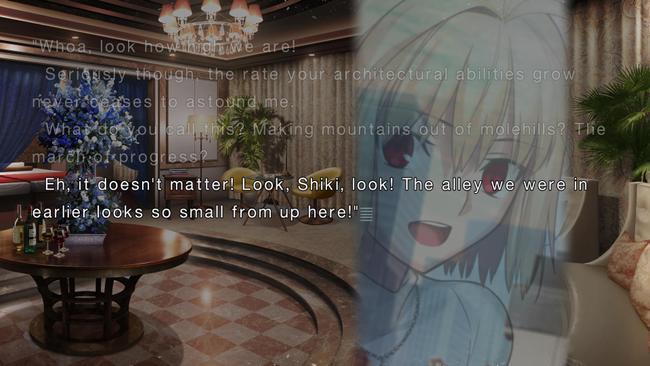
Tsukihime -A piece of blue glass moon- keeps the timeless tale of main character Shiki Tohno intact. Players experience the world of Tsukihime and its characters through his special eyes. After a near death incident in his childhood, Shiki has been able to see ‘lines of death’ on everything he sees. By tracing these lines, Shiki can cut through anything no matter how dense it may be. His accident left his body frailer than the average person though, and continually seeing death lines with his Mystic Eyes of Death Perception places great mental strain on him.
Shortly after Shiki’s return to the Tohno mansion upon his father’s passing, he meets Arcueid - a beautiful blonde-haired vampire. A chance encounter leads to an unimaginable tragedy that has Shiki dive into the underworld of Souya and the undead horrors it possesses. Newcomers diving into Tsukihime for the first time should be aware that the story contains sequences filled with lots of violence, blood, and gore at times; it's not done needlessly, though those squeamish to those have been warned.
Several new original characters give the Near Side routes a breath of fresh air that seamlessly integrate themselves into an already compelling ensemble that has been universally loved for many, many years. I didn’t expect myself to be a Mario Gallo Bestino fan, but here I am admitting that he was one of the best new additions to these tales.
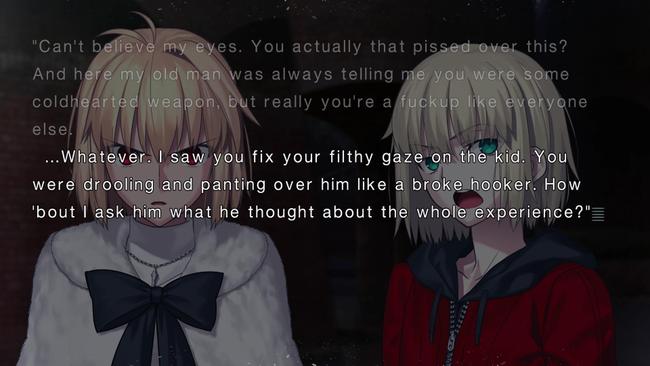
Not all of these new characters have a remarkable role… yet. Some of them are merely introduced and deliberately not expanded upon further. Tsukihime -A piece of blue glass moon- is only the first part of Tsukihime remake project after all; the Far Side routes with Akiha, Hisui, and Kohaku have already been teased with a secret movie that announces the follow-up, Tsukihime -The other side of red garden-. Rest assured, this secret movie does have English text and an English logo for it, so I think it is a safe bet that the English localization team isn’t planning to stop with A piece of blue glass moon.
As far as its English script is concerned, I think the localization did an excellent job with Tsukihime -A piece of blue glass moon-. It is a considerable, and noticeable, step-up from Witch on the Holy Night. I found Witch on the Holy Night’s English script to be disappointingly dry at times, with some embarrassing typos and absurd romanization choices for some key characters.
Meanwhile, Tsukihime -A piece of blue glass moon- was one of the smoothest scripts I’ve read in a visual novel even with its lengthy runtime. Lines flow well, as it preserves the eccentric sentence structure and text presentation that Nasu employs in critical moments. The English script matches the mannerisms of how individual characters instill their personality when reading their lines. While I would’ve loved to see the international release go the extra mile by including full voice acting in other languages, I fully understand the gargantuan amount of effort and resources it would have taken that probably would have pushed the release back even further, so I don’t necessarily fault them for sticking with only Japanese voices for its myriad of characters.
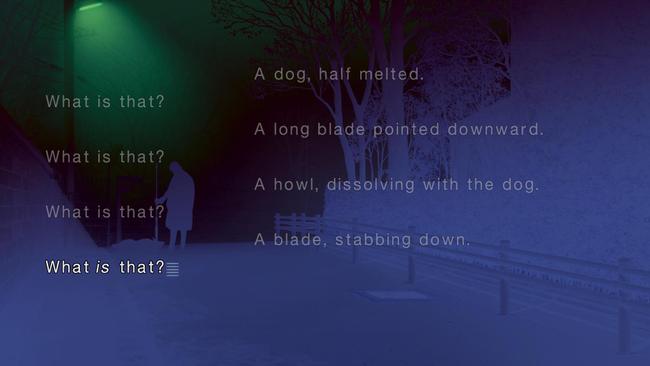
There are still a tiny amount of minor unintentional typos I noticed, though it is practically negligible in the grand scheme of things. The English romanizations of all the major and minor characters are properly intact from what I remember of the source material, but I do have some tiny nitpicks with some romanization decisions for off-hand names mentioned. Admittedly, I did a bit of digging to find any semblance of the reason behind why some names were romanized in such a manner and of course, it led back to maintaining consistency with how they were localized in Fate/Grand Order.
Anyway, I’m getting ahead of myself. The English script knows when to have fun to match the tempo of the original source text. Sometimes the diction employs swearing a tad too much for some scenes, though it’s ultimately not a significant issue that deterred my enjoyment.
As often seen in English localization script decisions with other games, there will be times when the English script may not be an exact 1:1 match with what the character is saying in Japanese verbatim. Instead, the English diction and sentence structure will opt to best match the sentiment and spirit of the intended meaning that best correlates with how the English language is understood and processed by native English speakers. I personally agreed with a lot of the decisions that the localization team made and enjoyed their interpretation for a lot of tricky intricacies in the script.
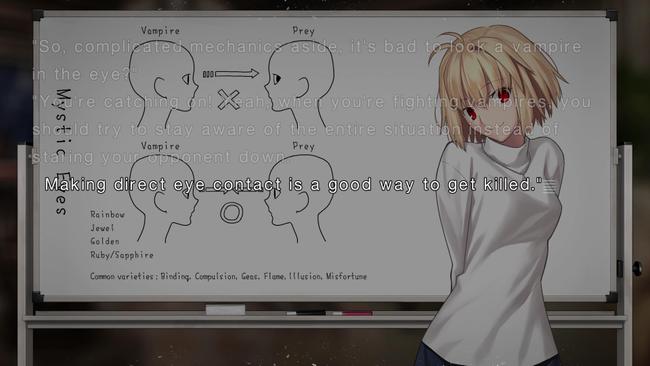
Those that like to switch back-and-forth between text languages to examine how different ones approached certain lines will relish in how fast and easy they can do it in Tsukihime -A piece of blue glass moon-. It takes roughly less than five inputs to do it accounting for cursor memory in the config menu and it switches instantaneously.
What is especially fun about this feature in the international release lies in the game’s infographic segments. For instance, Arcueid will literally take out a whiteboard in the middle of conversation to lecture Shiki, and players by extension, about how vampires operate to sustain their bodies. There will be several pictures and text on the whiteboard itself accompanying her explanation. All of the text on the whiteboard will be swapped to another language in real-time, if players switch it during these moments.
The biggest issue I had with the English script is funnily enough, right at the beginning of the game. During the intro, the scene sometimes fades to black to introduce the key staff behind the project. These segments still have ongoing voiced narration during these transitions, yet they are not accompanied with English text or subtitles. It didn’t give me the best first impression going into the official English release of Tsukihime -A piece of blue glass moon-, though luckily it wasn’t emblematic of the overall exquisite quality of the English localization.
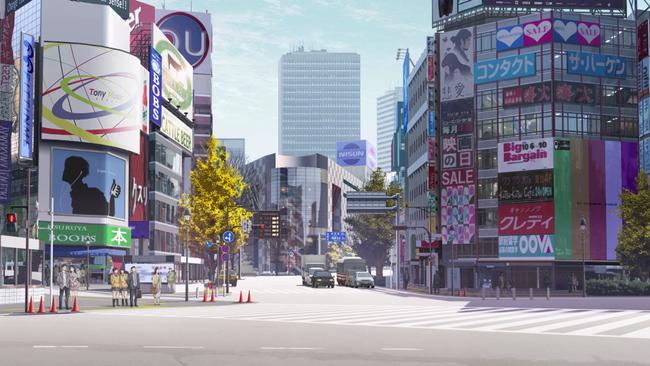
Tsukihime -A piece of blue glass moon- is probably the closest example of what a “modern AAA visual novel” would look like. Its presentation quality is on another level when it comes to the realm of visual novels. There are a staggering amount of unique art assets. No centimeter of any background is thoughtlessly unattended to, and many backgrounds have different variations that reflect different times of day or “damaged” versions of familiar sights should a battle occur there in the story.
Every single voiced character in the game usually has a multitude of different body poses and expressions. More significant characters, such as the two main route heroines, have multiple outfits. The CG gallery will continually add new art assets as people progress through the game; usually, the story will pan through zoomed in art to depict set piece moments so the CG gallery is handy to view the full version of these art pieces in their entirety.
When scenes begin, the composition beautifully comes together between backgrounds, character portraits, environmental ambience, sound effects, accompanying text, and purposeful framing. Action sequences often cut up portions of a background and zoom in on some part of a character’s body to emphasize a motion or convey a reaction. It’s breathtaking to behold how stellar everything comes together on a visual and audio level.
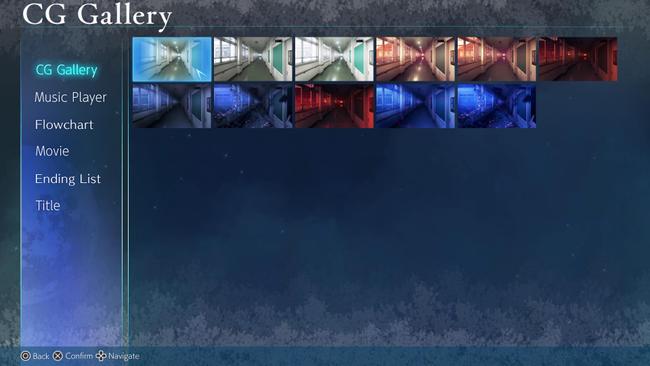
A music player in the gallery will gradually fill up as players encounter new tracks. Tracks can only be replayed here with basic features such as repeat, a volume slider, skipping to the next track, and going back to the previous track. Unfortunately, backing out of the music player menu at all will not keep the current track playing.
Any body of text someone might have accidentally thumbed through can either be rewound back to that moment or accessed quickly via a text log. By default, unread text and unseen scenes will not be skipped.
The secret most useful option in the config menu is the ‘Auto Skip Cleared Scenes’ toggle. If people are on the hunt for bad endings or unlocking alternate scenes, this becomes immensely useful to toggle on, in order to traverse to the next dialogue choice swiftly.
While the flowchart feature is handy to rewind back to earlier scenes, it is a bit unwieldy without this aforementioned option. There isn’t a way to immediately jump to the next dialogue option. Instead, people will have to skip through individual scenes until they reach one that contains a dialogue option, where the game will automatically stop until a player makes their decision.
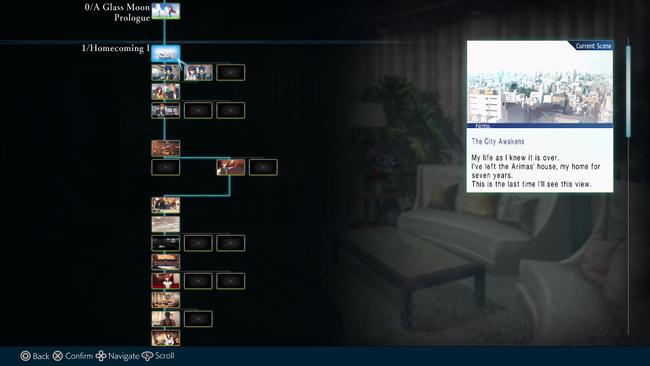
Most alternate scenes and bad end paths can be accessed by choosing another option, but there’s a few tricky ones that rely on previous decisions a few chapters back to unlock them. Jumping forward to a previous scene after backtracking through the flowchart isn’t allowed, unless they made a previous manual save at that juncture. It isn’t the most intuitive system to navigate around at first, though I eventually got used to it.
A fun incentive to collect all the bad ends is because they all unlock an episode of Teach Me, Miss Ciel!, comedic shorts that star Ciel and Neco Arc - a chibi cat version of Arcueid; those familiar with the Melty Blood fighting game spin-offs may have seen her there. These light-hearted gags often break the fourth wall to advise the player where they went wrong and how to rectify it.
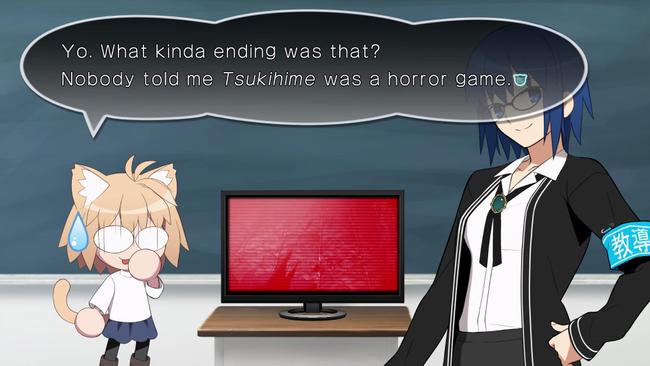
Tsukihime -A piece of blue glass moon- is simply a fantastic visual novel to read from beginning to end. It is single-handedly the closest example of what a modern AAA visual novel would entail; the amount of care put into its production values is incredible in the realm of visual novels. The English localization does a magnificent job matching the tone, spirit, and meaning of its source material as every character’s personality shines through their dialogue brilliantly in English. A few blemishes in the clumsy nature of its flowchart navigation hold it back slightly, but I couldn’t be happier with how the official English release of the Tsukihime remake has beautifully turned out.